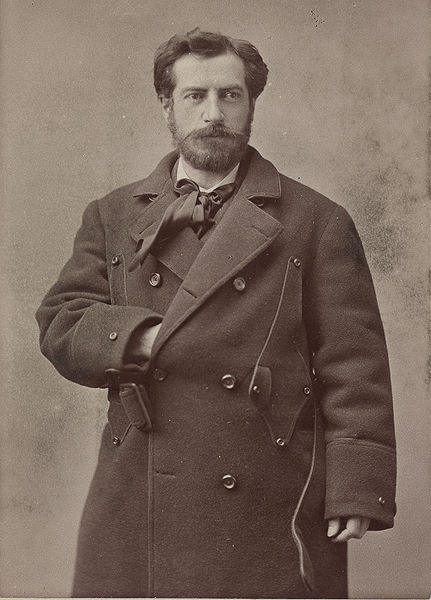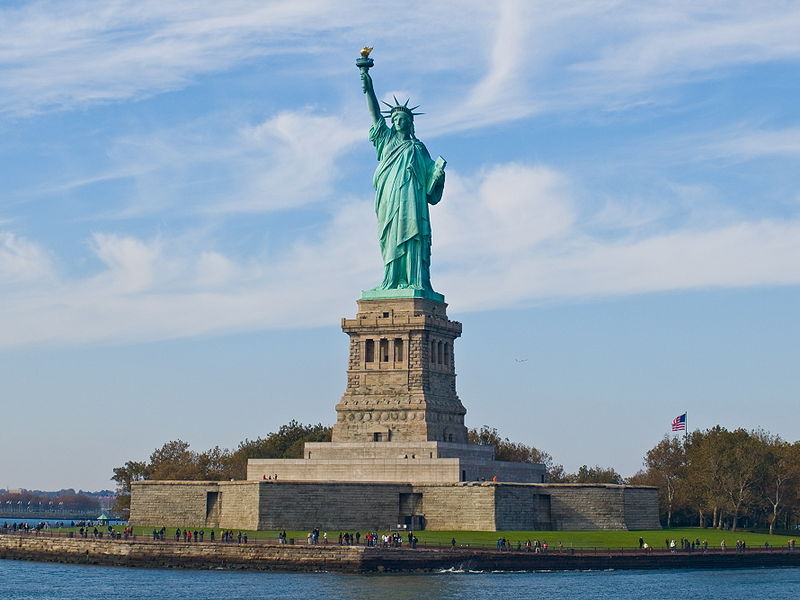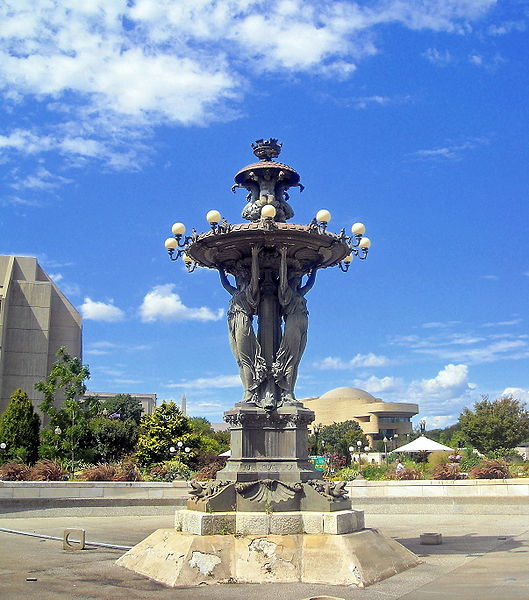<Back to Index>
- Inventor Elisha Gray, 1835
- Sculptor Frédéric Auguste Bartholdi, 1834
- Dictator of Argentina Jorge Rafael Videla Redondo, 1925
PAGE SPONSOR


Frédéric Auguste Bartholdi (2 August 1834, Colmar, Haut-Rhin – 4 October 1904) was a French sculptor who is remembered mainly for designing the Statue of Liberty.
Born in Colmar, Alsace, to Jean Charles Bartholdi and Augusta Charlotte Bartholdi, Bartholdi went to Paris to further his studies in architecture as well as painting. He studied painting with Ary Scheffer, but later turned his attention to sculpture, which afterward exclusively occupied him. He was one of the French commissioners in 1876 to the Philadelphia Centennial Exposition. There he exhibited bronze statues of “The Young Vine-Grower,” “Génie Funèbre,” “Peace” and “Genius in the Grasp of Misery,” for which he received a bronze medal.
Auguste Bartholdi died of tuberculosis, in Paris, on 4 October 1904. The work for which Bartholdi is most famous is Liberty Enlightening the World. Soon after the establishment of the French Third Republic, the project of building some suitable memorial to show the fraternal feeling existing between the republics of the United States and France was suggested, and in 1874 the Union Franco-Americaine (Franco-American Union) was established by Edouard de Laboulaye. Among its members were Laboulaye, Paul de Rémusat, William Waddington, Henri Martin, Ferdinand Marie de Lesseps, Jean-Baptiste Donatien de Vimeur, comte de Rochambeau, Oscar Gilbert Lafayette, and Bartholdi. The
plan of Bartholdi having been approved, more than 1,000,000 francs were
raised by subscription throughout France for the building of the
statue. In 1879, Bartholdi was awarded design patent U.S. Patent D11,023 for
the Statue of Liberty. This patent covered the sale of small copies of
the statue. Proceeds from the sale of the statues helped raise money to
build the full statue. On 4 July 1880, the statue was formally
delivered to the American minister in Paris, the event being celebrated
by a great banquet. Before starting his commission, Bartholdi had traveled to the United States and personally selected New York Harbor as
the site for the statue. The United States set apart Bedlow's Island as
a site for the monument, and funds were collected throughout the United
States for the building of the pedestal, about $300,000 being raised.
In October 1886, the structure was presented to the nation as the joint gift of the French and American people. This
statue is 151 feet and 1 inch high, and the top of the torch is at
an elevation of 305 feet 11 inches from mean low-water mark. It
was the largest work of its kind that had ever been completed up to
that time. It was rumored all over France that the face of the Statue
of Liberty was modeled after Bartholdi’s mother; and the body after his
wife, Jean Emilie. Bartholdi's hometown Colmar prides
itself with a number of statues and monuments by the sculptor, as well
as with a museum in the house in which he was born. Bartholdi’s other major works includes a variety of statues at Clermont-Ferrand, in Paris, and in other places.
